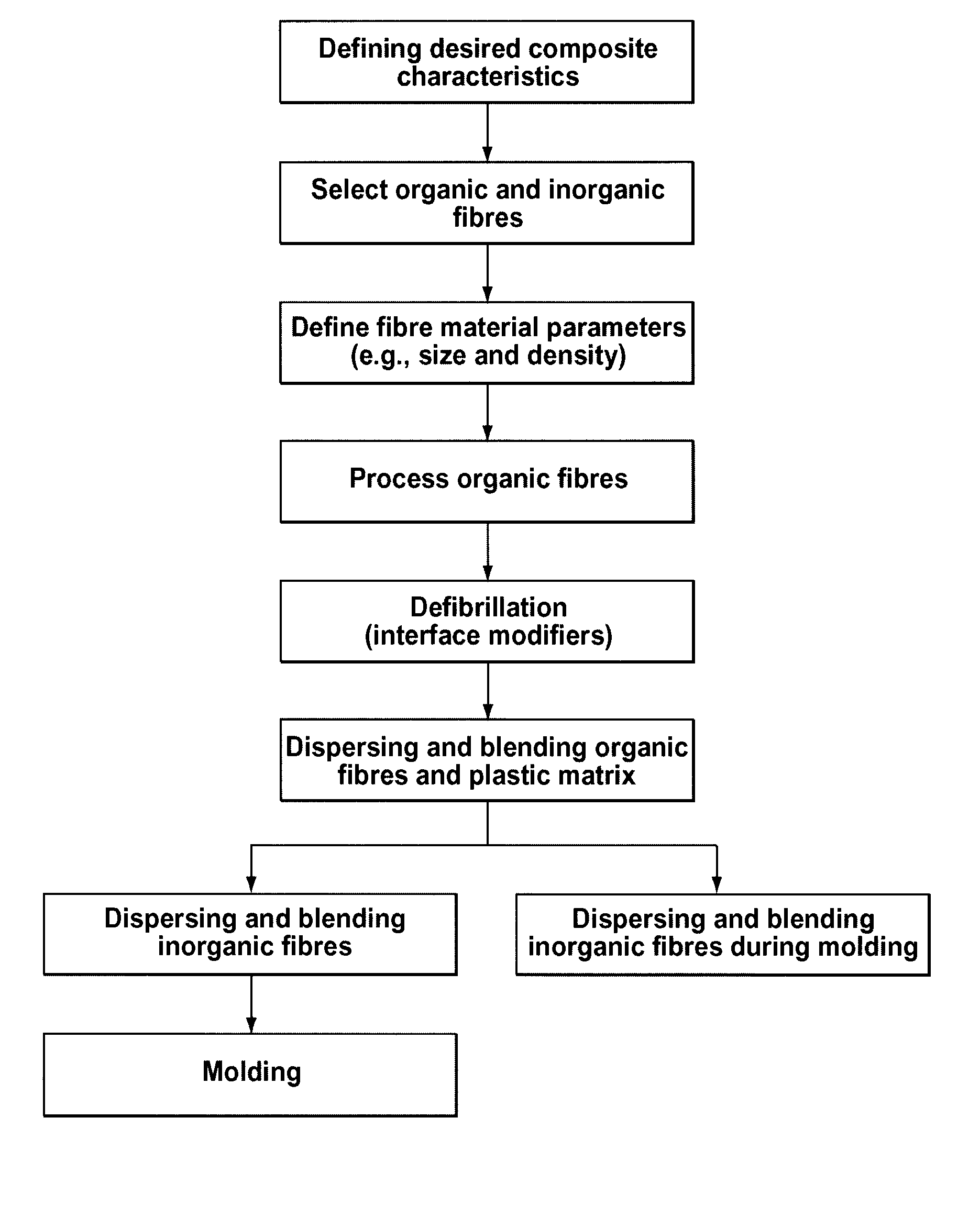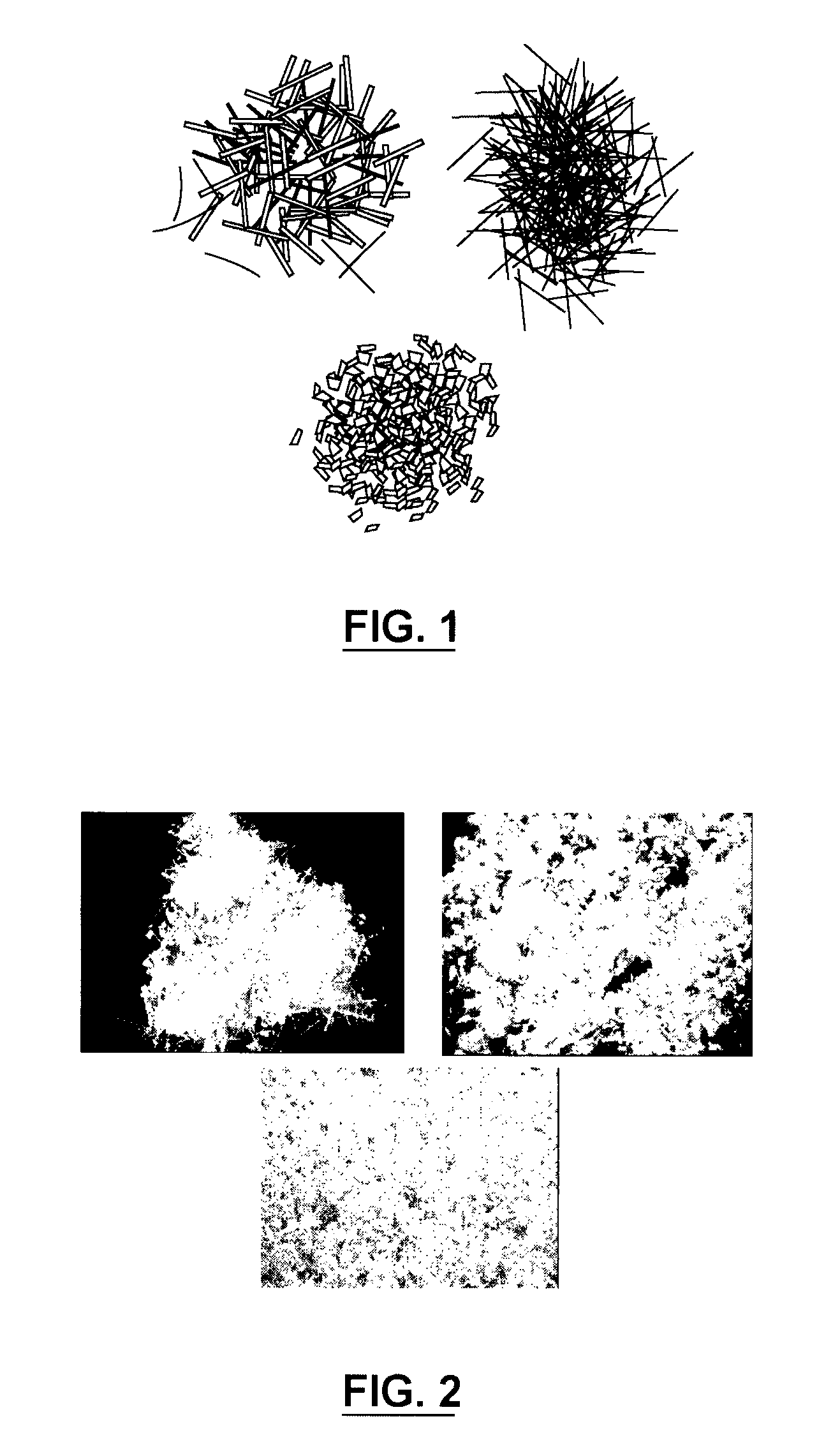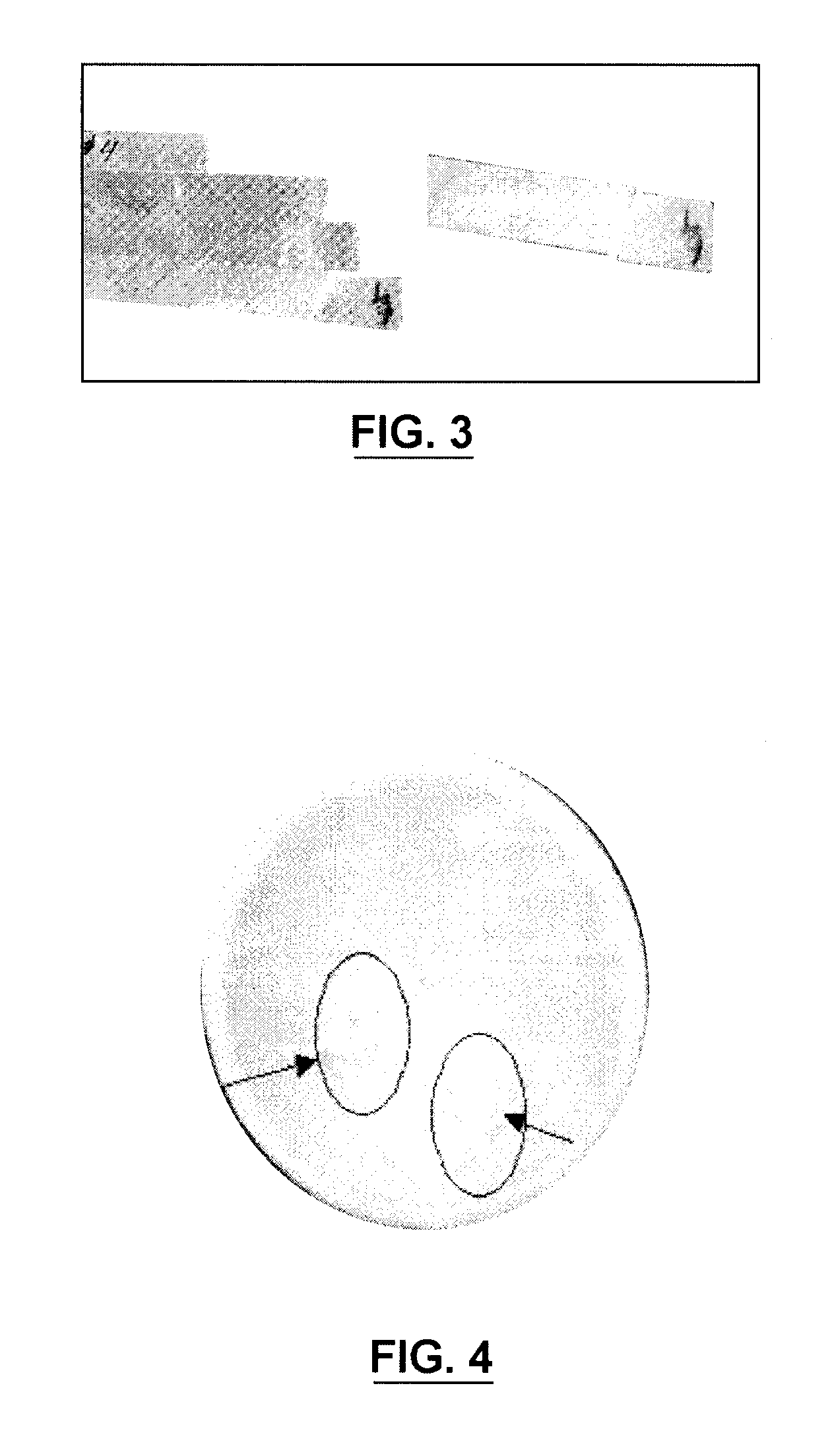Manufacturing process for hybrid organic and inorganic fibre-filled composite materials
a technology of organic fibres and composite materials, which is applied in the direction of ceramic shaping apparatus, electrical equipment, artificial filament recovery, etc., can solve the problems of poor wetting and dispersion of fibres, ineffective carrying of load from the matrix of fibres, and difficult to get a homogeneous dispersion of these fibres in the hydrophobic thermoplastic matrix, etc., to achieve better interfacial interaction, maximize performance properties, and improve the effect of composite performan
- Summary
- Abstract
- Description
- Claims
- Application Information
AI Technical Summary
Benefits of technology
Problems solved by technology
Method used
Image
Examples
example 1
[0121]Examples of the composition of the moldable thermoplastic composition are given in Table 2. In multi-stage processing, pulp fibres were defibrillated in a low shear internal mixer (for example, a HENSCHEL™ mixer) with surface active agents at a temperature of not more than 140° C. and at rpm of at least 90 for not less than 30 minutes followed by defibrillation in a high shear mixer for not less than 30 seconds and melt blended with thermoplastic in the same mixer at temperature not more than 190 degrees Celsius. The melt composition from the high shear mixer was further mixed and blended with glass fibres in a low shear mixer at a temperature of at least 170° C. and at rpm of not less than 80 for not less than 60 seconds. The melt composition from the internal mixer was granulated to prepare the lignocellulosic hybrid composite granulates. With this multi-stage processing technique, both cellulosic and glass fibres were well dispersed in the polymer matrix with good interfaci...
example 2
[0127]Effect of fibre type on the mechanical properties of the composites prepared in the present invention under the same defibrillation time is different for composites with different fibres, which indicates the extent of defibrillation which may be desirable for different types of fibres are different, which in turn depends on the fibre characteristics such as method of preparation of the fibres, for example, mechanical pulp or chemically treated pulp, or bleached pulp, etc. Fibres that are prepared by chemical pulping and contain less lignin, are easy to defibrillate and give high mechanical performance compared to the fibres prepared by mechanical means. The following Table (Table 4) shows further examples of the performance properties of the composites with same amount of glass fibre and functional modifiers prepared as per the present invention using a constant defibrillation time. Soft wood pulp requires more defibrillation time than the other pulp fibres, as these fibres ar...
example 3
[0129]Effect of glass fibre loading on the mechanical properties of the composites prepared in the present invention under the same defibrillation time and processing conditions is shown in the Table 4, which indicates that extent of hybridization can vary depending upon the property requirements.
[0130]
TABLE 5Effect of glass fibre content on the mechanicalproperties of hybrid composites.Sample40% BCTMP35% BCTMP(hardwood) +(hardwood) +ASTM TestPerformance Property10% GF15% GFASTM D638Tensile strength, MPa8595ASTM D638Tensile modulus, GPa4.65.0ASTM D790Flexural strength, MPa137155ASTM D790Flexural modulus, GPa5.76.5ASTM D256Un-notched Izod329405impact strength,J / M
PUM
| Property | Measurement | Unit |
|---|---|---|
| length | aaaaa | aaaaa |
| tensile strength | aaaaa | aaaaa |
| temperature | aaaaa | aaaaa |
Abstract
Description
Claims
Application Information
 Login to View More
Login to View More - R&D
- Intellectual Property
- Life Sciences
- Materials
- Tech Scout
- Unparalleled Data Quality
- Higher Quality Content
- 60% Fewer Hallucinations
Browse by: Latest US Patents, China's latest patents, Technical Efficacy Thesaurus, Application Domain, Technology Topic, Popular Technical Reports.
© 2025 PatSnap. All rights reserved.Legal|Privacy policy|Modern Slavery Act Transparency Statement|Sitemap|About US| Contact US: help@patsnap.com



